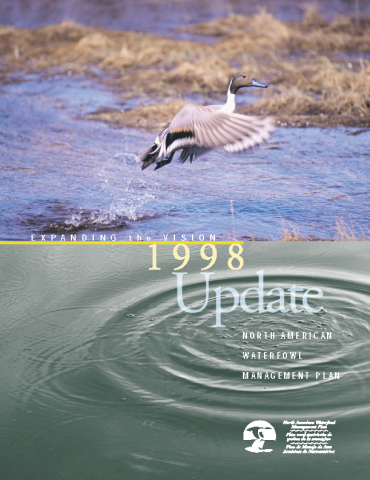
The North American Waterfowl Management Plan (Plan), signed by Canada and the United States in 1986, laid out A Strategy for Cooperation in the conservation of waterfowl. It emphasized the importance of a partnership approach to conserve habitats important to waterfowl, to continually improve our scientific understanding of waterfowl populations and their interactions with habitats, and to periodically update the Plan.
In 1994, the Plan was updated and became a truly continental effort when Mexico joined Canada and the United States as a signatory. Although the principles and the waterfowl population goals in Expanding the Commitment remained the same as in the 1986 Plan, habitat objectives increased fourfold. The challenge was clear: more needed to be done on a broader scale.
The 1998 Update, Expanding the Vision, builds on the legacy of the 1986 Plan and 1994 Update. The vision put forward here recognizes that the socioeconomic context for waterfowl conservation in North America is changing rapidly. Now more than ever, waterfowl conservation is linked to a wide range of social and economic policies and programs, and to other international wildlife conservation interests. The 1998 Update was developed in light of these changing circumstances and after extensive consultation. We hope that it will guide continental waterfowl conservation well into the next century.
